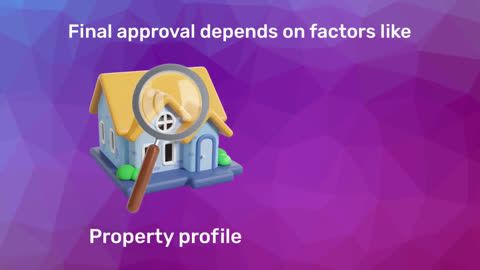In this article, we will delve into what the Jantri rate is, its importance in Surat's real estate market, how it's calculated, and its impact on property transactions. Additionally, we’ll explore how understanding these rates can influence your financial planning, including obtaining a home loan to facilitate your property purchase.
What is the Jantri rate in Surat?
The Jantri rate is essentially the minimum value that can be used for property registration purposes. It acts as a benchmark for property transactions, ensuring that properties are not undervalued during sales. This is crucial for preventing tax evasion and maintaining transparency in the real estate market.In Surat, as in other parts of Gujarat, the Jantri rate varies depending on factors such as the property's location, type, and surrounding infrastructure. Properties in prime areas, such as commercial hubs or well-developed residential neighbourhoods, usually have higher Jantri rates compared to those in less developed or rural areas.
For potential property buyers in Surat, being aware of the current Jantri rate is essential. It provides a realistic estimate of the minimum amount required for the transaction, which is crucial for financial planning, including securing a home loan.
Importance of Jantri rate in Surat
Surat, known for its rapid development and booming real estate market, has seen significant growth in property transactions. The Jantri rate plays a vital role in this market for several reasons:1. Fair property valuation: The Jantri rate ensures that all property transactions in Surat are conducted at a fair and transparent value. It prevents the underreporting of property prices, thereby protecting the interests of both the government and property owners.
2. Revenue generation: The government collects stamp duty and registration fees based on the Jantri rate. This revenue is crucial for funding public projects and infrastructure development in Surat, contributing to the city's growth and modernization.
3. Market stability: By providing a consistent benchmark for property valuations, the Jantri rate helps stabilize the real estate market. This consistency prevents speculative practices that could lead to market volatility and price bubbles.
4. Financial planning: For homebuyers in Surat, knowing the Jantri rate is crucial for financial planning. It helps estimate the total cost of property acquisition, including stamp duty and registration fees. Moreover, understanding the Jantri rate can aid in determining the amount of a home loan required to finance the purchase.
How Jantri rates are calculated in Surat
The Gujarat government's revenue department calculates the Jantri rate based on several factors, ensuring it accurately reflects current market conditions:1. Location: The property's location significantly impacts its Jantri rate. Properties in central areas of Surat, such as those near commercial centers or key residential neighborhoods, typically have higher rates due to higher demand and better infrastructure.
2. Type of property: Different Jantri rates apply to residential, commercial, and agricultural properties. The intended use of the land is a crucial factor in setting an appropriate rate that reflects its value.
3. Market value: The prevailing market value of properties in Surat is considered when determining the Jantri rate. This alignment ensures that the rate reflects the actual transaction values in the market.
4. Development index: The level of infrastructure development in an area, such as roads, public transport, schools, and hospitals, also influences the Jantri rate. Better-developed areas generally have higher Jantri rates due to increased demand.
5. Government policies: New government policies, infrastructure projects, or urban development plans can impact the Jantri rates. For example, areas identified for new development projects or those near proposed metro lines may see an increase in their Jantri rates.
These factors are reviewed periodically, and the Jantri rate is updated accordingly to ensure it remains relevant and reflective of current market conditions.
Understanding the Jantri rate system in Surat
The Jantri rate system in Surat is designed to bring uniformity and transparency to property valuations. It serves as a safeguard against the undervaluation of properties, which can lead to revenue losses and legal complications. Here’s a closer look at how the system functions:1. Fixed minimum value: The Jantri rate sets the minimum value for property transactions. While properties can be sold for a price higher than the Jantri rate, they cannot be registered for a value lower than this rate. This ensures that all transactions are conducted at a fair minimum standard.
2. Regular updates: The government periodically revises the Jantri rates to reflect changes in the market. This keeps the system dynamic and responsive to the real estate market's fluctuations, ensuring that the rates are always aligned with current property values.
3. Public access: Jantri rates are publicly accessible through the official Gujarat government website. This transparency allows buyers and sellers to check the rates before engaging in any property transaction, ensuring that they are fully informed.
4. Impact on financing: For buyers seeking a home loan, the Jantri rate is critical as it affects the stamp duty and registration costs, which are part of the overall property acquisition cost. Understanding these rates can help buyers budget effectively and avoid any financial surprises during the purchase process.
How to find Jantri rate for a property in Surat
If you are planning to buy or sell property in Surat, it’s essential to know the current Jantri rate to ensure that your transaction complies with government regulations. Here’s how you can check the Jantri rate for Surat:1. Visit the official website: The Gujarat government has an official portal where you can check the Jantri rates for different regions, including Surat.
2. Select the district and area: Once on the portal, you will need to select the district (Surat) and the specific area where the property is located.
3. Enter property details: Provide details such as the type of property and its precise location to retrieve the Jantri rate.
4. View and download: The rate for the selected area will be displayed, which you can view and download for future reference.
This information is crucial not only for understanding the minimum value at which your property can be registered but also for estimating the stamp duty and registration fees that you will need to pay.
Financing your property purchase in Surat
Understanding the Jantri rate is just one part of the equation when buying property in Surat. The next crucial step is financing your purchase. Most homebuyers opt for a home loan to cover the significant cost of buying property. A home loan can help bridge the gap between your savings and the total cost of the property, making homeownership more accessible.Bajaj Housing Finance Home Loan
For those looking to finance their property purchase in Surat, Bajaj Housing Finance Home Loan offers attractive interest rates and long repayment tenure. With a Bajaj Housing Finance Home Loan, you can benefit from competitive rates, quick processing, and a hassle-free experience, making your dream of owning a home in Surat a reality.Here are a few reasons why you should choose Bajaj Housing Finance Home Loan:
1. Competitive interest rates: Bajaj Housing Finance offers some of the most competitive interest rates in the market, ensuring that your home loan remains affordable throughout its tenure.
2. Flexible repayment options: With flexible repayment options, borrowers can choose a plan that best fits their financial situation, making it easier to manage monthly payments.
3. Quick and easy processing: The application process for a Bajaj Housing Finance Home Loan is streamlined and user-friendly, ensuring quick approval and disbursement.
Whether you are buying your first home, upgrading to a larger space, or investing in real estate, a Bajaj Housing Finance Home Loan can provide the financial support you need.




